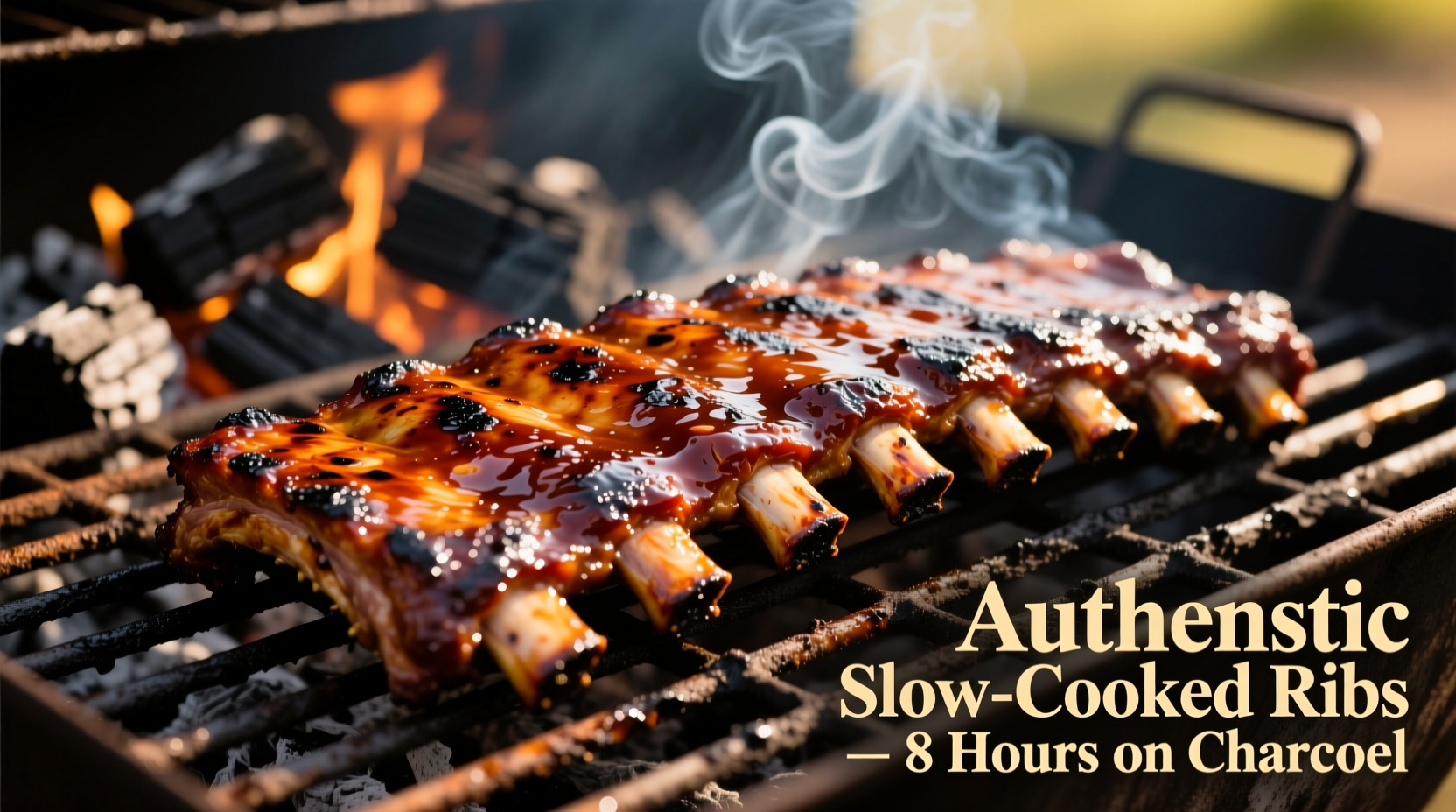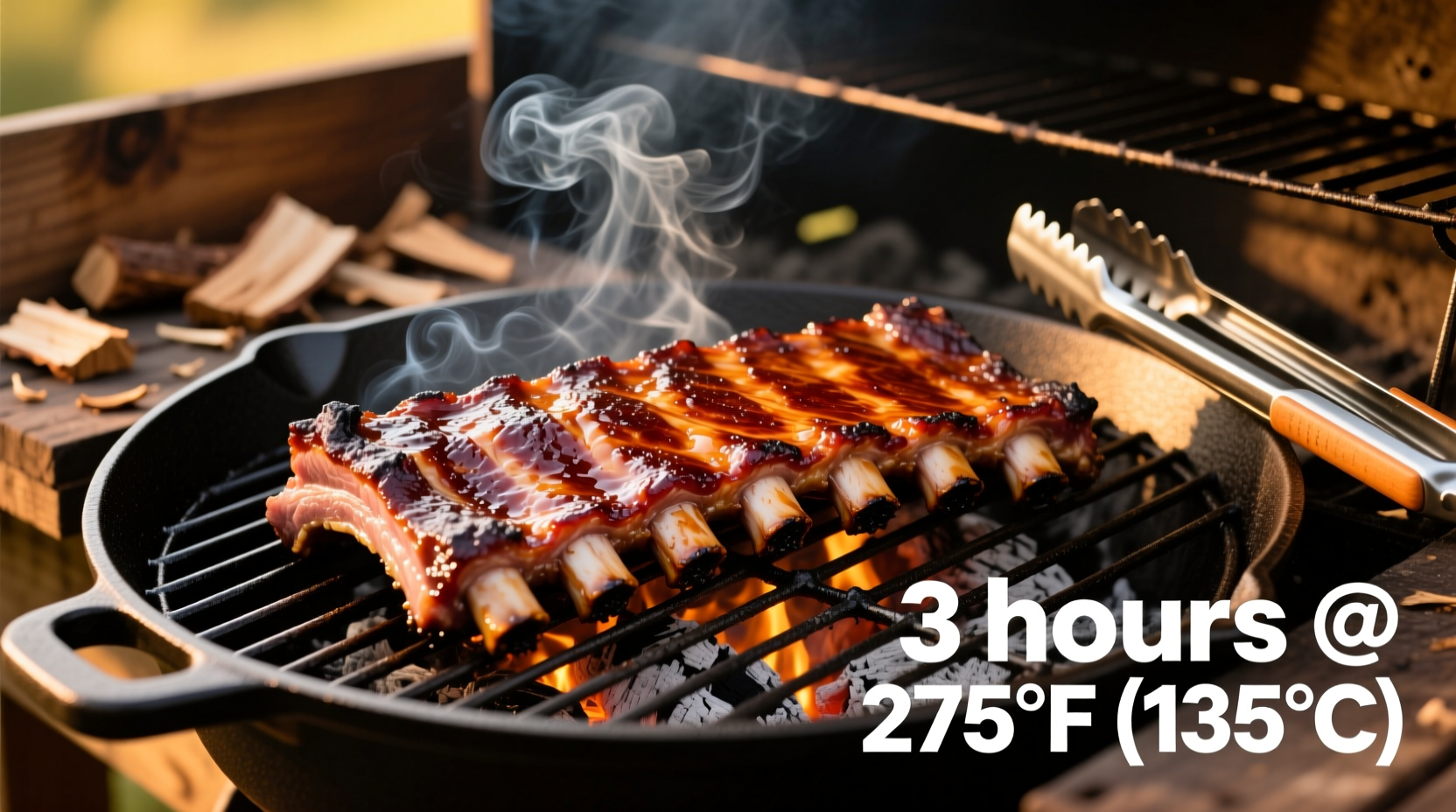Nothing beats the satisfaction of serving perfectly tender, flavorful ribs straight from your backyard BBQ. Whether you're hosting a summer cookout or perfecting your weekend grilling skills, getting the timing right separates good ribs from exceptional ones. This guide cuts through the confusion with precise cooking times, temperature guidelines, and professional techniques that guarantee restaurant-quality results every time.
Selecting Your Ribs: The Foundation of Perfect BBQ
The type of ribs you choose directly impacts your cooking timeline. Understanding these differences prevents common timing mistakes:
| Rib Type | Thickness | Cooking Time Range | Best Cooking Method |
|---|---|---|---|
| Baby Back Ribs | 1.5-2 inches | 3-5 hours | Indirect heat, 225°F |
| Spare Ribs | 2-3 inches | 4-6 hours | 3-2-1 method, 250°F |
| St. Louis Cut | 2 inches | 4-5 hours | Indirect heat, 235°F |
According to the USDA Food Safety and Inspection Service, pork should reach 145°F for safety, but ribs require higher temperatures (195-203°F) to break down collagen for that perfect tender texture. This critical distinction explains why simply following minimum safety temperatures leads to tough, chewy results.
Preparation: Setting Up for Success
Proper preparation ensures your timing calculations stay accurate. Rushing these steps creates variables that throw off your cooking schedule:
- Membrane removal - The silver skin on the bone side prevents seasoning penetration and causes uneven cooking. Use a butter knife to lift the edge, then grip with paper towel and peel off.
- Dry brine application - Apply 1/4 cup kosher salt per rack 12-24 hours before cooking. This draws out moisture initially, then allows the meat to reabsorb seasoned liquid.
- Temperature equalization - Remove ribs from refrigerator 45-60 minutes before cooking. Cold meat placed directly on the grill creates significant timing discrepancies.

Mastering the Cooking Timeline
Timing varies based on your BBQ setup and environmental factors. These professional techniques maintain consistency:
The 3-2-1 Method: Foolproof Timing Framework
This industry-standard approach delivers reliable results regardless of rib type:
- First 3 hours - Unwrapped cooking at 225-250°F. Maintain consistent temperature using the lid's vents. Resist the urge to peek - each opening adds 15-20 minutes to cooking time.
- Next 2 hours - Wrap in butcher paper or foil with 1/4 cup apple juice. This "Texas crutch" technique accelerates collagen breakdown while retaining moisture.
- Final 1 hour - Unwrap and return to grill. This sets the bark and allows sauce to caramelize without burning.
Temperature Monitoring: Your Secret Weapon
Time alone shouldn't determine doneness. Combine timing with these verification methods:
- Bend test - Lift ribs with tongs at the center. Properly cooked ribs will bend 45 degrees with cracks forming on the surface.
- Internal temperature - Insert thermometer probe between bones. Target 195-203°F for optimal tenderness.
- Probe test - A meat thermometer or skewer should slide in with little resistance, like butter.
Environmental Factors That Impact Cooking Time
Professional pitmasters account for these variables that affect your timeline:
- Weather conditions - Wind increases cooking time by 15-25%. In 90°F+ weather, reduce target temperature by 25°F.
- BBQ type - Charcoal maintains more consistent temperatures than gas during long cooks. Offset smokers require 10-15% more time than vertical water smokers.
- Rack placement - Position ribs bone-side down on the grill grate furthest from heat source for even cooking.
Troubleshooting Common Timing Issues
Even with perfect planning, adjustments happen. Here's how to respond:
- Ribs cooking too fast - If ribs reach 180°F in under 3 hours, reduce temperature to 200°F and add a water pan to slow the process.
- Ribs stalled at 160°F - This "stall" is normal as moisture evaporates. Continue cooking - wrapping accelerates through this phase.
- Uneven cooking - Rotate racks every 90 minutes if using multiple levels. For single racks, rotate 180 degrees.
Resting and Serving: The Final Critical Step
Never skip resting time - it completes the cooking process:
- Rest wrapped ribs for 20-30 minutes before slicing
- Cover loosely with foil, but don't seal completely
- Internal temperature will rise 5-10°F during resting
- Slice between bones with a sharp knife using downward motion
According to Kansas City Barbeque Society competition standards, properly rested ribs maintain their structure when lifted but separate easily when bitten. This balance between structural integrity and tenderness defines championship-quality results.











 浙公网安备
33010002000092号
浙公网安备
33010002000092号 浙B2-20120091-4
浙B2-20120091-4